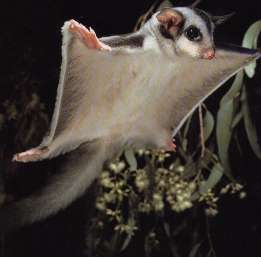
a)
. Lemurs are found only in the tropical areas of the island of Madagascar and the Comoro Islands, primarily in the treetops. As herbivores, lemurs are found eating the forest's plants. Some lemurs, eat flowers, seeds, leaves. Omnivore lemurs, such as the mouse lemur, eat insects, eggs, lizards, as well as plants.
b). Lemurs locomotor pattern is jumping from tree to tree, branch to branch, using their long tails to keep balance. Unlike their other primate relatives, lemurs don't use their tails to grip branches, instead they use their arms and legs and travel the treetops.
c). Lemur's environment have influenced their locomotor adaptation. Because they are usually traveling the treetops quickly, their arms and legs have adapted to the swift movements. Their tails have adapted in a similar way as well; to give balance as they span the rain-forests instead of being used as an extra limb like their close primate relatives.

a).
Spider Monkeys are found in the tropical rain forests of South, and Central America as well as Mexico. They find their food primarily in the treetops, eating nuts, spiders, bird eggs, fruits and leaves. Spider monkeys are pretty noisy creatures; they yell and shake trees when there is danger around such as margay cats and even humans.
b). Spider monkeys locomotor pattern is swinging using all five's; arms, legs and their tail! Their elongated fingers and abbreviated thumb helps swing through branches. Their prehensile tails grip branches to allow them a graceful journey through the rain-forest's treetops.
c). The Spider monkey's environment has significantly influenced their locomotor adaptation. Their prehensile tails are a handy adaptation for eating purposes; hanging from their tails allows them to gather food with both hands. The spider monkeys ability to grip with their fingers and thumbs allow them to get out of danger swiftly and allows them to vigorously shake the branches to scare away prey.

a).
Baboons prefer to live in the savanna and other dry climates, however, few are found in the tropical rain-forests. They eat a variety of food. For example, fruits, grasses, roots seeds, small birds and rodents. Sometimes, baboons act as pests for some farmers because they attack their livestock such as sheep and also eat their crops. They spend most of their time on ground but do sleep in trees.
b). Baboons locomotor pattern is walking quadrupedally, meaning on all fours. Because they are semi-terrestrial they stay on the ground during the day but also climb trees to sleep at night. Baboons do not have prehensile tails because it is not needed as much as other primates.
c). Baboons environment plays an important part in shaping their locomotor patters. Unlike its tropical primate relatives, the baboon doesn't have a prehensile tail to use as an extra limb. What for? Those limb-like tails are primarily used for grasping branches to move from treetop to treetop. The baboon, on the other hand, stays on ground sitting upon rocks as well as sitting or sleeping on rough branches in trees.
.jpg)
a).
Gibbons are known as lesser apes, due to their small stature. They are primarily found in the tropical and subtropical rain-forests of the South, East and Southeast Asia. As omnivores, gibbons eat flowers, fruits, leaves, insects, spiders, bird eggs and small birds. Gibbons spend most of their lives in trees, and because of their great skill of mobility in the dense treetops, most predators can not catch them.
b). Gibbons locomotor pattern includes brachiating, traveling from tree to tree by swinging under branches with hand over hand motion. Sometimes, gibbons walk upright, bipedally (on 2 feet), on the tree branches. When they are walking on the branches high in the rain-forests, they stretch their arms out to keep balance, like a tightrope walker. The most common locomotion, however, is brachiation, in which they spend 90% of the time doing.
c). The gibbons environment influences it's locomotor patterns.Their long arms, strong shoulders and lightweight have been adapted for means of traveling, which allows the gibbons to spend most of their lives swinging from branch to branch or walking on branches. The gibbons find all their food supply high on the treetops so there is no reason for them to go on ground. When they are on ground, they have the ability to walk upright, which is an adaptation for outrunning predators.

a).
Chimpanzees live in social communities found in African rain-forests, grasslands, and woodlands. They are usually vegetarians, usually eating fruits, plants, and leaves.However, sometimes male chimpanzees consume insects, eggs and meat. Chimpanzees are very intelligent, pleasant and peaceful animals.
b). The chimpanzee's locomotor pattern is mostly walking quadrupedally as well as walking upright. While walking on all fours, the chimpanzee is also called a knuckle walkers, like gorillas. The chimpanzee also has the ability to swing from tree to tree, where they do most of their eating and sleeping.
c). The chimpanzees locomotion has been greatly affected by its environment. Whether they are walking in groups quadrupedally, or swinging from branch to branch, their locomotor ability is always adapting to their needs. These interchangable traits are constantly at work to the chimpanzees advantage.
I believe that the environments plays such a significant role in influencing physical and behavioral traits . All the primates studied are so alike. However their environmental stresses causes them to physically look different from one another as well as act quite differently from each other as well. Some primates have long arms and strong tails to brachiate and even eat at the same time. On the other hand, some primates lack these prehensile tails because its not necessary where they live. The primates adapted how to walk, swing or jump all because of their differing environments. I think that environments play an enormous role in how organisms adapt their common physical and behavioral traits.






.jpg)





